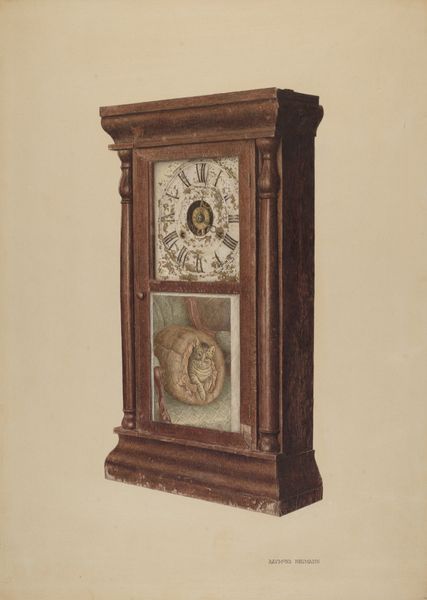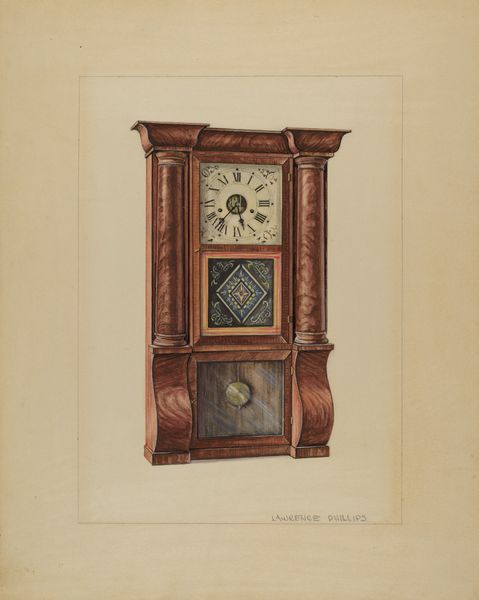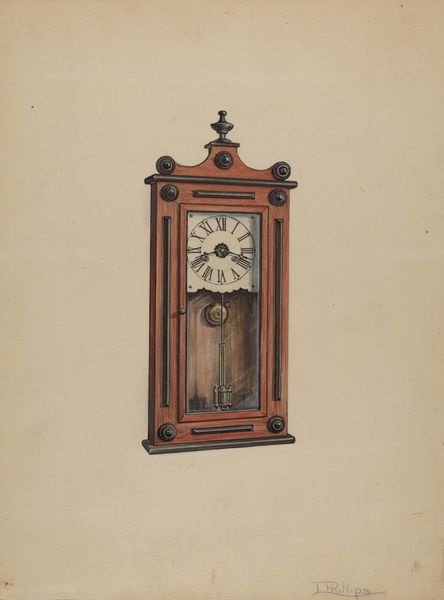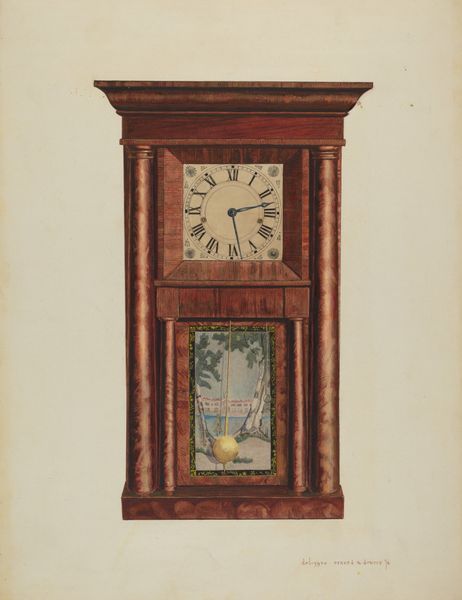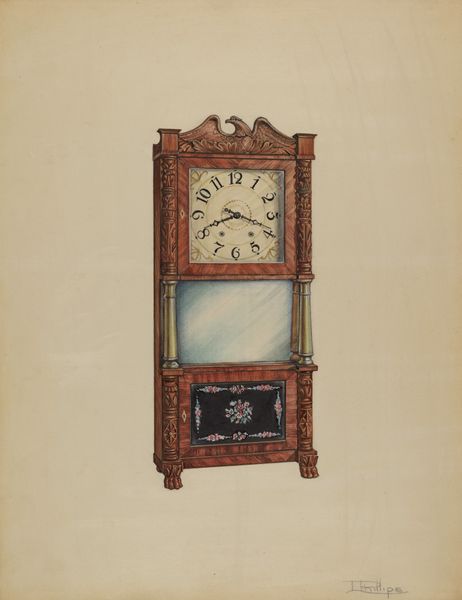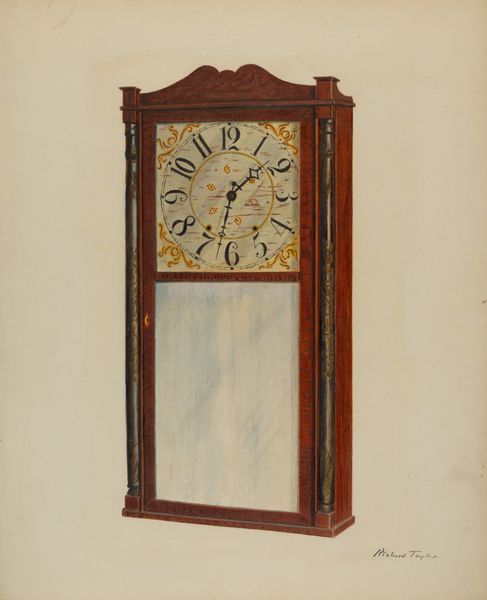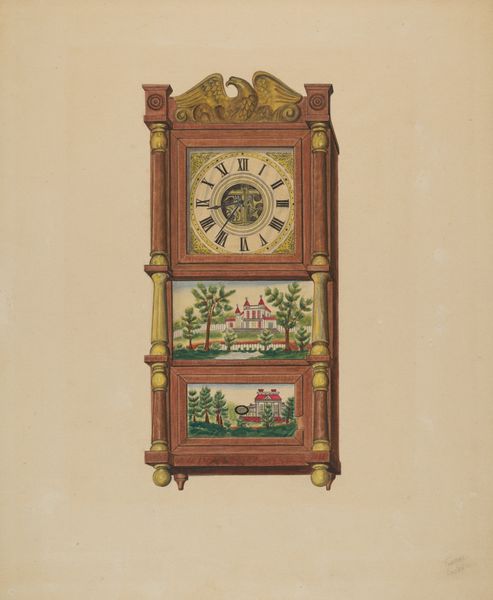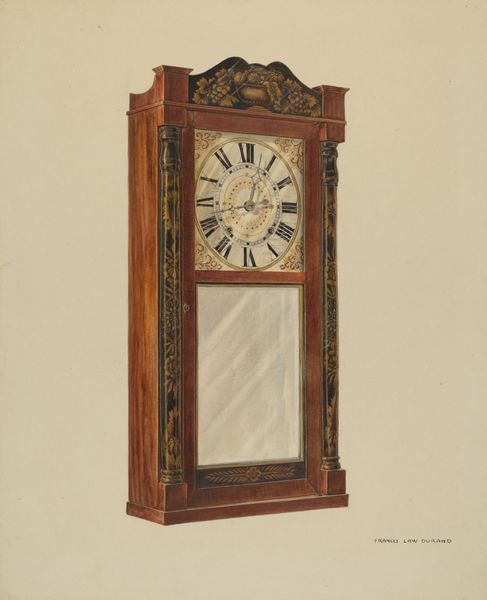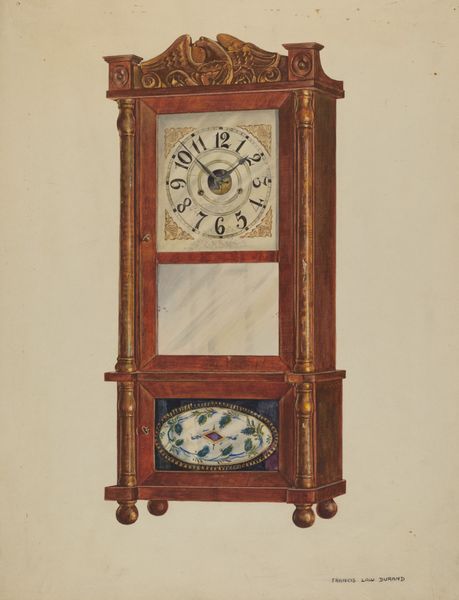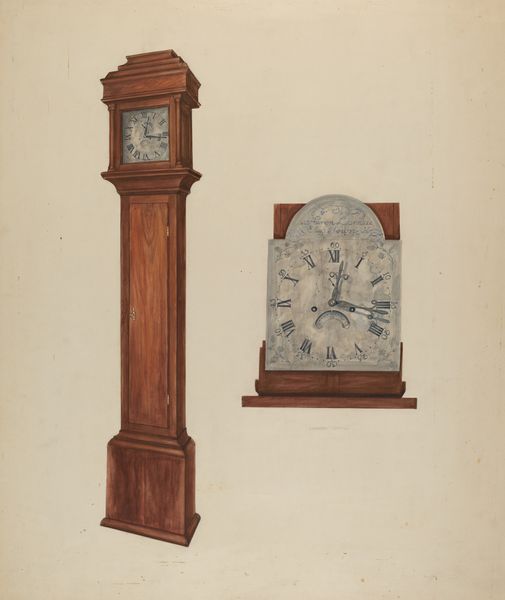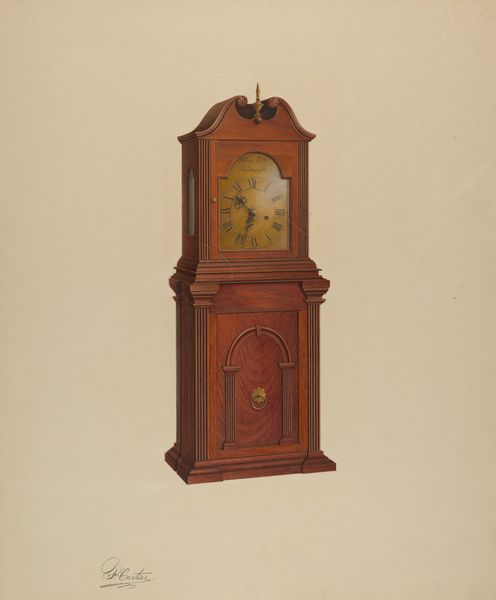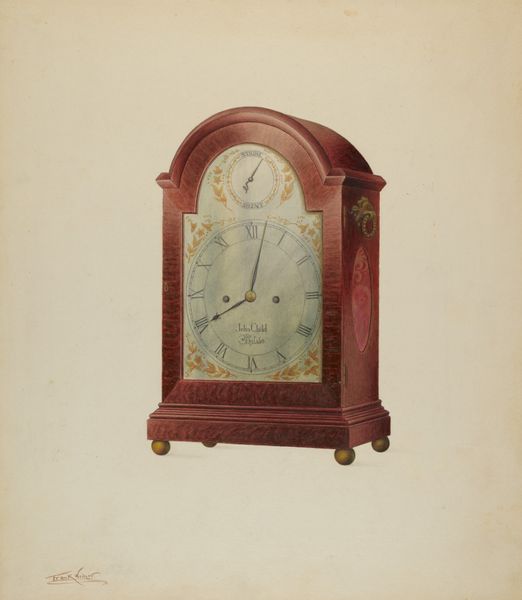
drawing, painting, watercolor
#
drawing
#
painting
#
watercolor
#
watercolour illustration
#
decorative-art
Dimensions: overall: 45 x 35.7 cm (17 11/16 x 14 1/16 in.) Original IAD Object: 32 x 17 x 4 1/2 inches
Copyright: National Gallery of Art: CC0 1.0
Curator: Welcome. Here we have Walter W. Jennings' "Clock," rendered in watercolor around 1936. Editor: My first impression is one of subdued elegance; the muted tones and precise lines suggest a nostalgic longing for a bygone era. Curator: I see this piece reflecting the anxieties surrounding industrialization and the measurement of time during the Depression era. Clocks, then and now, dictated schedules and labor. Did time own us? Editor: Precisely. And observe how Jennings uses watercolor to soften the hard edges of the clock, which creates an interplay between structure and fluidity. The choice of color is equally intriguing, offering earthiness through tonal control that creates visual interest and depth. Curator: Also the vignettes. Look at the idyllic scenes decorating the clock’s body. Aren't these idealized escapes from the harsh realities of the 1930s? One scene has people relaxing, evoking ideas of leisure, even as the clock itself speaks to structured time. Editor: I am drawn to how the hand-painted scenes are positioned as though embedded in a manufactured time-keeping machine. The integration of varied scales makes for an intentional disruption of our perception. The smaller intimate panels seem more fragile compared to the architectural presence of the clock casing. Curator: That fragility could signal the precariousness of lives during economic hardship. And the juxtaposition challenges established power structures inherent in the division of labor, doesn’t it? Time marches on, yet here are visions of a world outside of industrialized time. Editor: An exquisite synthesis of design elements serves to challenge perception, compelling us to question traditional representations of utility. Curator: In short, Jennings invites us to reconsider the relationship between time, labor, and leisure, a dialogue as pertinent today as it was then. Editor: Yes. A true feat, rendered with subtle strokes of elegance and profound socio-political undercurrents.
Comments
No comments
Be the first to comment and join the conversation on the ultimate creative platform.
